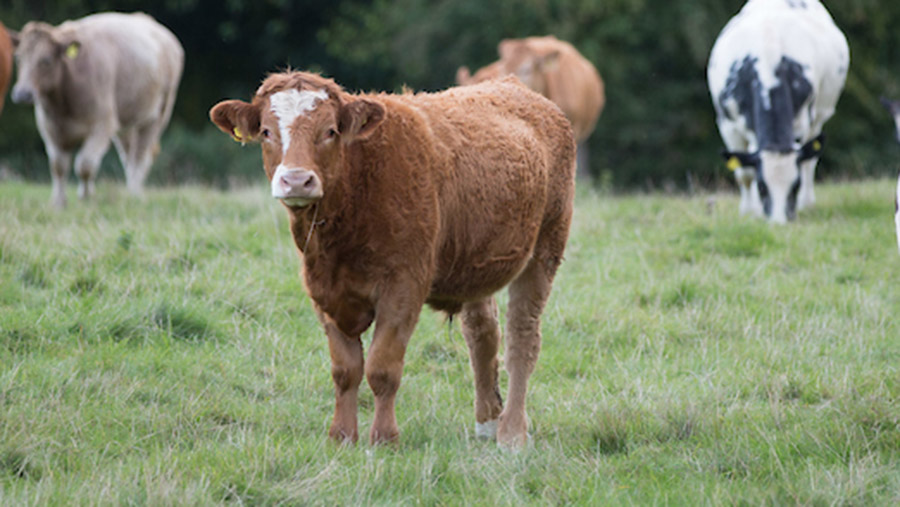7 top tips for managing tracks and water when grazing stock to prevent poaching
 © Tim Scrivener
© Tim Scrivener Outwintering stock or even just getting them out as early as possible in the spring can have huge benefits, particularly in terms of cost saving.
However, if careful attention isn’t given to managing tracks, feed and water areas it can lead to problems with poaching and ground damage, meaning farmers could be left with unproductive pasture and a hefty bill to rectify it.
Adam Lockyer, farm conservation adviser at FWAG South West, gives advice on how farmers can better manage these areas to minimise the risk of damage.
Tracks
Tracks can be high-risk areas for erosion and run off as they are a flow path between grazed areas and roads. Ways to prevent this include:
1 Create drainage systems in high-risk areas
Installing cross-drains can help to slow the flow of water. These can be informal soil banks or bunds or engineered devices – motorway crash barriers can work really well.
Crash barriers or concrete sleepers can also be grant funded through the Countryside Stewardship scheme if you are in a priority area.
See also: More articles on grassland management in the Know How centre
2 When adding drainage, always start at the top of the hill
Working down the route will help you to locate the best place to divert water. Preferably this should be into rough permanent pasture or a blind ditch.
3 Consider the individual site and topography before making any decisions
If the track is flat, just profiling it can be a low-cost way of reducing water flow – there is no blueprint, so make decisions based on individual farm circumstances.
Feed and water areas
For some farms, sacrificing field areas for feed and water troughs is the only option. However, there are other possibilities that are worth considering to reduce the impact on the grass.
4 Feed on flatter parts of the farm
If possible, this will minimise the risk of run-off and should be favoured over using ring feeders in gateways, which increases the likelihood of poaching.
5 Use a mob grazing system
Keeping stock moving and using mobile water and feeding areas helps to spread the risk of damage and maintains green cover.
If mobile troughs and feeders are not an option, then using ring feeders will also work, however, it is important to consider the likelihood of additional damage from moving them with a tractor every day.
6 Pre-place silage bales in fields
Stockpiling small numbers of bales in fields is becoming increasingly popular as farmers can place them during drier weather and unwrapping can be done either on quad or on foot – limiting the amount of travelling on the ground during wetter months.
Rolling the bales out is another way to stop stock congregating in high-risk areas of the field.
7 Keep feeding and drinking areas 10m away from watercourses
The new Farming Rules for Water have extended NVZ requirements, meaning farmers now have additional obligations to avoid livestock poaching and damage to water areas.
There is limited awareness about this at the moment, but it is worth considering when planning grazing.
Case study: How a beef farmer saves £25,000 a year by outwintering
Somerset farmer Alex Fraser made the switch to outwintering his 200-head suckler herd last year and believes the saving in terms of bedding, feed and slurry collection and spreading is worth £25,000 per winter.
Farm facts:
- South Haddon Farm, Skillgate, Somerset
- 223ha
- 200-head suckler herd of South Devon and Hereford cattle
- Spring calving
- 100% grass fed on a rotational grazing system
- Outwintered on stockpiled grass and hay
The farm operates a rotationally grazed, 100% grass-fed system and with careful planning Mr Fraser has been able to make huge cost savings as well as reducing environmental pressures such as run-off and poaching.
When it comes to moving stock, a public highway running through the centre of the farm and free draining land makes the process fairly straightforward. However, on the steeper ground, there are two purpose-built concrete tracks, with a gully down one side to stop run-off.
“Instead of flowing down the track and into the farm, the gully diverts the water,” explains Mr Fraser.
“There are brown patches where the water runs into the field so you can tell it is working.”
See also: How to become 100% protein efficient by using multi-species leys
On an outwintering system, traditional ring feeders or restricted feed areas – with no hard standing around them – can become a major problem for farmers. To minimise the risk of poaching, Mr Fraser avoids feeding on wet ground and uses rolled-out bales to feed stock.
“We use bales of either hay or haylage and roll them out across the field. One bale plus grass will do 100 cows for a couple of days. Bales are also pre-placed in the paddocks to avoid damage from going in and out with a tractor.”
Mr Fraser uses moveable troughs and has water hydrants across the farm, making accessing drinking water very simple, as well as minimising the risk of damage to the ground.
While there is additional labour that comes with moving stock every two days, the cost saving compensates for this.
